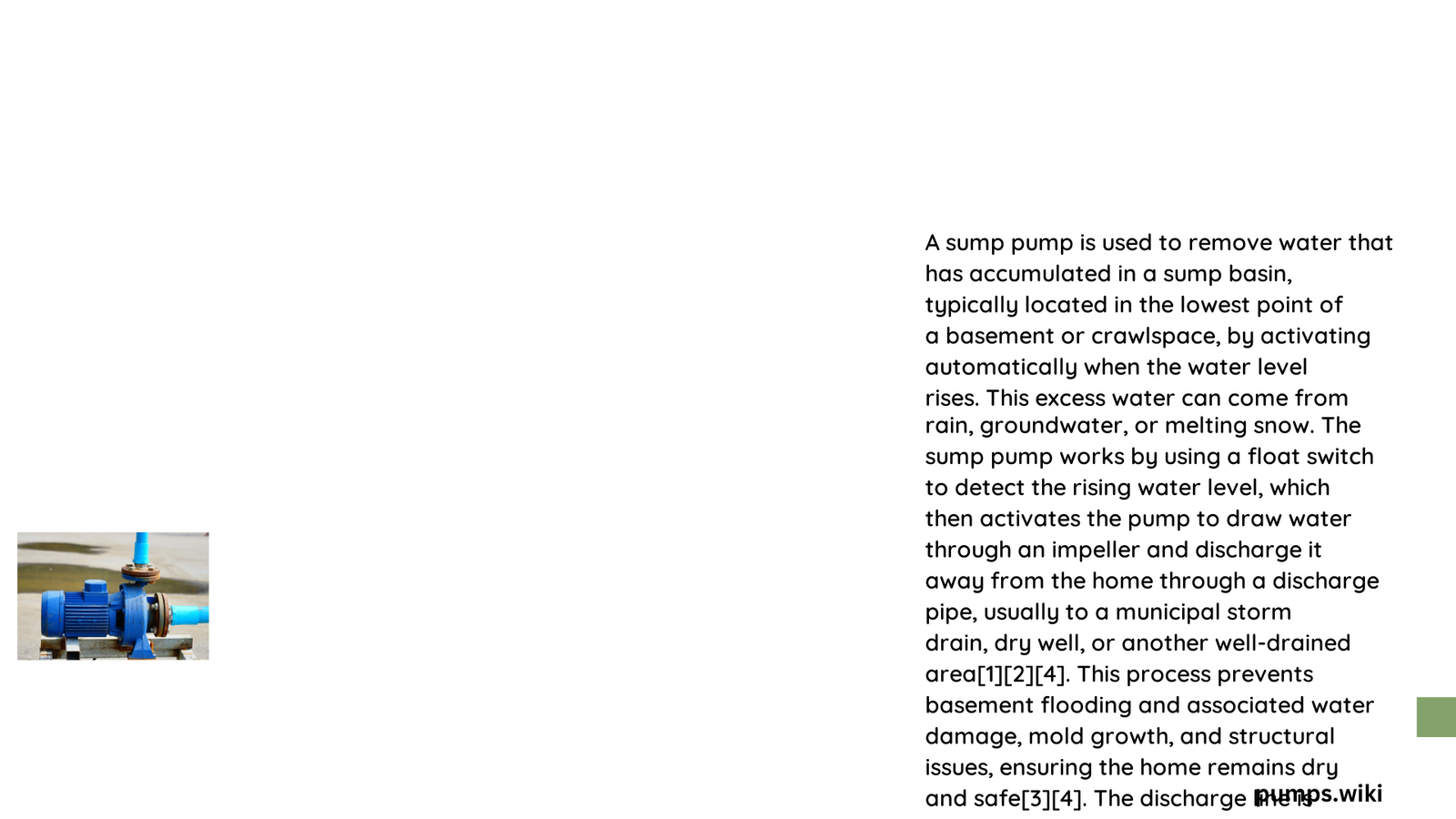A sump pump serves as a critical water management solution for homeowners and property managers, strategically designed to eliminate excess water that has accumulated in basements, crawl spaces, and low-lying areas. By automatically detecting and pumping out water before it causes structural damage, these ingenious devices protect properties from potential flooding, moisture-related issues, and costly water damage repairs.
What Causes Water Accumulation in Basements?
Water accumulation in basements can result from various environmental and structural factors:
Natural Water Sources
- Groundwater Seepage: High water table levels
- Rainfall and Snowmelt: Excessive precipitation
- Poor Drainage: Inadequate landscape grading
Structural Vulnerabilities
- Foundation Cracks
- Inadequate Waterproofing
- **Improper Exterior Drainage Systems
How Does a Sump Pump Work?

Operational Mechanism
A sump pump operates through a systematic process:
- Water Collection
- Water flows into a designated sump pit
-
Pit is typically located at the lowest point of the basement
-
Activation Trigger
- Float switch rises with water level
-
Automatically activates pump when water reaches critical height
-
Water Removal
- Pump pushes water through discharge pipe
- Directs water away from building’s foundation
Types of Sump Pumps
| Pump Type | Power Source | Capacity | Best For |
|---|---|---|---|
| Submersible | Electric/Battery | High | Large basements |
| Pedestal | Electric | Medium | Smaller spaces |
| Battery Backup | Battery | Emergency | Power outage protection |
What Factors Influence Sump Pump Effectiveness?
Key Performance Determinants
- Pump Capacity
- Discharge Pipe Length
- Power Supply Reliability
- Maintenance Frequency
Installation Considerations
- Professional assessment recommended
- Proper pit depth and location critical
- Electrical requirements must be met
What Maintenance Prevents Sump Pump Failures?
Regular Inspection Checklist
- Quarterly Checks
- Test pump functionality
- Clean sump pit
- Inspect discharge lines
- Annual Professional Evaluation
- Comprehensive system assessment
- Component replacement if needed
When Should You Replace Your Sump Pump?
Warning Signs
- Unusual Noises
- Frequent Cycling
- Age Over 7-10 Years
- Visible Rust or Corrosion
Cost Considerations
Investment Breakdown
- Basic Pump: $100 – $400
- Professional Installation: $500 – $1,000
- Annual Maintenance: $100 – $300
Conclusion
A sump pump is a vital home protection system that proactively manages water accumulation, preventing potential structural damage and maintaining a dry, safe living environment.
Pro Tips
- Always have a backup power source
- Consider battery backup systems
- Schedule regular professional inspections
Reference:
1. EPA Water Management Guidelines
2. National Association of Home Builders
3. Basement Waterproofing Experts
